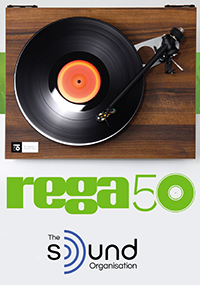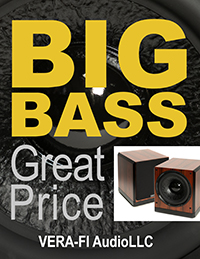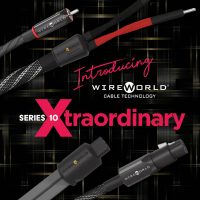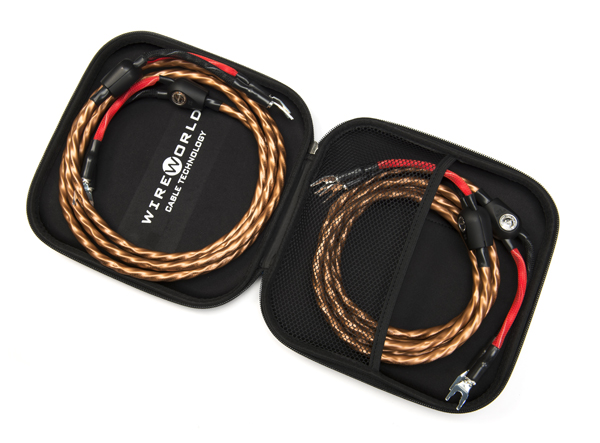 One sure way to start a war is to mention cable on any audiophile discussion forum. Yes, there are many who are convinced that cables are all crapola, conjured by sorcerers who want to separate you from your hard-earned money, offering nothing in return. At the same time, others live and die by their cable, often plugging in wire products costing multiple times their components’ due in search of a certain sound.
One sure way to start a war is to mention cable on any audiophile discussion forum. Yes, there are many who are convinced that cables are all crapola, conjured by sorcerers who want to separate you from your hard-earned money, offering nothing in return. At the same time, others live and die by their cable, often plugging in wire products costing multiple times their components’ due in search of a certain sound.
However, like most things, a little moderation goes a long way, and a perfect example is the Mini Eclipse 7 speaker cables from Wireworld to do just that. At $500 a pair, they will not break the bank, and to let the cat out of the bag, they will allow more music to pass on even a modest system.
Reviewer bias revealed, I’ve always had a fondness for Wireworld products and even back when I was working for The Absolute Sound, I had great results with their speaker cables. Owner David Salz doesn’t wear a fez or a gold lamé jacket; he’s an engineer with a methodical approach to everything he does, and his goal has always been to produce cable “that doesn’t damage the sound.” The new Mini Eclipse 7 not only succeeds brilliantly, it does so at a reasonable cost.
The Minis come nicely packaged in a black textured case and are available in standard lengths, either terminated with banana plugs or silver-plated spades, in the case of our review sample. These cables are extremely easy to use, nowhere near as stiff as my old Equinox IIIs, and not as monstrous in diameter as many of today’s premium cables, so those not wanting garden hoses on the floor should be able to work with them.
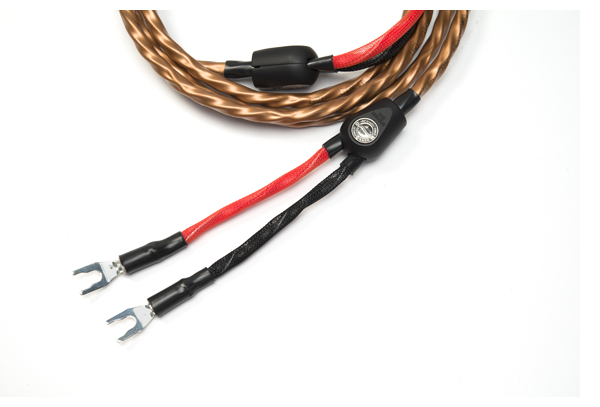
Blinding me with science
The Minis use a series of flat 14-gauge OCC copper strands in a quad conductor DNA Helix design to minimize the electromagnetic loss present in a signal cable. Combined with Wireworld’s Composilex dielectric material is indeed a very high-performance speaker cable. Like a number of other manufacturers, Wireworld pays close attention to the grain structure and signal directionality in their bare cable, orienting it for the best sound.
Non-believers in the crowd, take note: I have heard this effect demonstrated successfully more than once, and when at another cable manufacturer’s facility, was able to identify the difference correctly 10 out of 10 times, so this is real. It’s not major, but it is there, and paying attention to the fine details is what makes your system sound its best.
Just to be sure, the Minis were given 100 hours of break in time, via our vintage system consisting of a Sansui 771 receiver and a pair of JBL L26 speakers. Even at this level, fresh out of the box, the Minis were a major improvement over the standard Radio Shack wire that was in place in this very inexpensive system. Instantly, the bass response tightened up, especially in the upper mid-bass region, and the overall graininess of this old gear was substantially diminished.
Systems large and small
After logging a few hours on the Minis, they spent a fair amount of time in a modest system consisting of a Rega Brio-R integrated amplifier and a pair of Vandersteen model 1Ci speakers (reviewed last issue) with digital music streamed from a Meridian MS200. This particular system happens to use Home Depot 12-gauge extension cords as speaker cables, to good effect for a budget system.
Again, the sonic signature – or in this case, lack of one – is immediately apparent. The violins at the beginning of Anja Garbarek’s “Her Room” from the Smiling and Waving album have a natural tone, and the soundstage, filled with natural and artificial sound effects, is definitely more open. Regardless of recording, the overall soundstage presented by this system is bigger, allowing the speakers to easily give the illusion of disappearing.
I moved the cable into my house system, where they work in concert with the Devialet 110 and a pair of MartinLogan Aerius i speakers, music again supplied by a Meridian Control 15. Components with more resolution make it even easier to discern the difference the cables make. The driving, funky bass line in Betty Davis’s “If I’m in Luck I Might Get Picked Up” now has more punch than before, and the Minis replace a set of more expensive speaker cables. I notice the same thing with Glenn Hughes’s rapid-fire bass playing on the self-titled Black Country Communion album. Some cable, especially at this price point, tends to slow down the sound and introduce pace and timing issues – this is never the case with the Wireworld cable.
The vintage MartinLogan speakers are still very transparent (thanks to new panels from ML a few years ago) and easily reveal grain, yet the Minis help the system to reveal only the music, neither adding nor subtracting from the presentation. Going back to an old audiophile classic, Michael Hedges’s Aerial Boundaries is chock full of plucky, acoustic guitar playing that can be easily muddled, yet never is through the Minis. I notice the difference these cables make even more when I switch back to what I was using before.
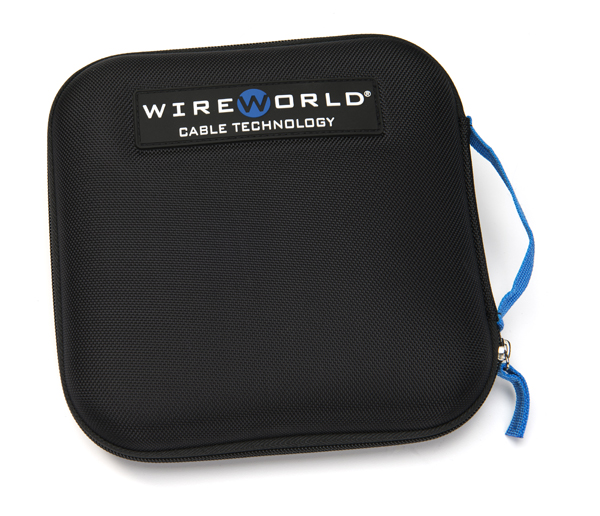
Convinces the cable skeptic
These days $500 for a pair of premium speaker cables is a reasonable, but not major, investment; however the Wireworld Mini Eclipse 7 speaker cables proved a valid upgrade, even in a system only worth about $1,000.
As with any system, to reap the maximum benefit from any cable, make sure to optimize speaker placement and component setup before investing in anyone’s wire, so that you can more easily hear the difference. And no, a $500 pair of speaker cables won’t make your $600 integrated amp sound like a pair of Pass Labs Class A monoblocks – that’s not being fair.
However, if you would like to take your current system to the next level, I highly suggest auditioning a pair of these at your local Wireworld dealer. You’ll be impressed. I’m impressed enough to buy the review pair for my Devialet system and to give these one of our Exceptional Value Awards for 2014.







